Top 10 Populous Cities in China
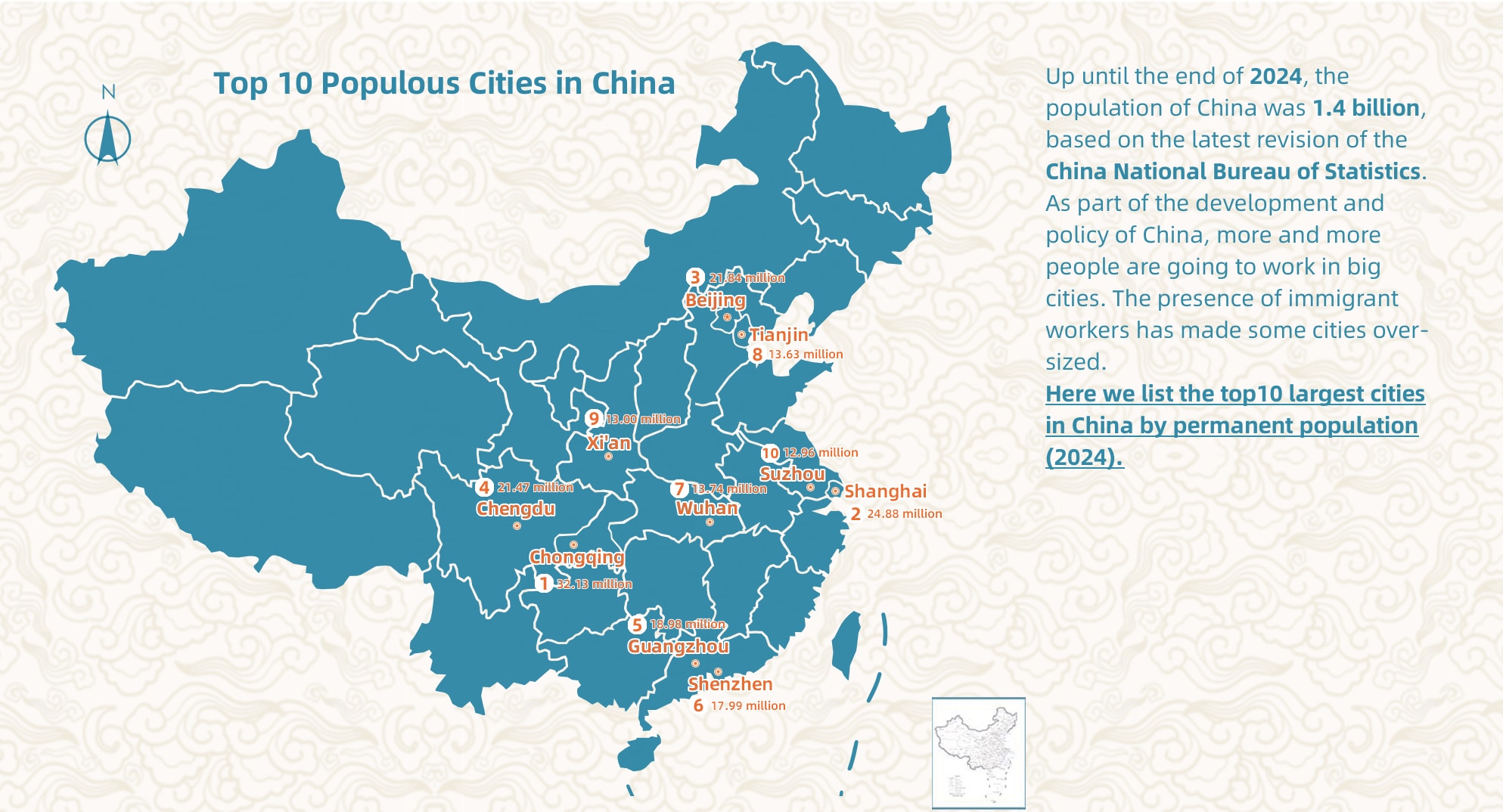
Up until the end of 2024, the population of China was 1.4 billion, based on the latest revision of the China National Bureau of Statistics. As part of the development and policy of China, more and more people are going to work in big cities. The presence of immigrant workers has made some cities over-sized. Here we list the top10 largest cities in China by permanent population (2024). Some are renowned, while others may seem completely new to you.
| Rank | City | Population (2024) | Area (km²) | GDP (USD) | Per Capita GDP (USD) |
|---|---|---|---|---|---|
| 1 | Chongqing | 32.13 million | 82402 | 0.46 trillion | 14,414 |
| 2 | Shanghai | 24.88 million | 6340 | 0.67 trillion | 26,908 |
| 3 | Beijing | 21.84 million | 16410 | 0.62 trillion | 28,383 |
| 4 | Chengdu | 21.47 million | 14335 | 0.30 trillion | 14,071 |
| 5 | Guangzhou | 18.98 million | 7434 | 0.42 trillion | 21,972 |
| 6 | Shenzhen | 17.99 million | 1997 | 0.49 trillion | 27,276 |
| 7 | Wuhan | 13.74 million | 8569 | 0.28 trillion | 20,142 |
| 8 | Tianjin | 13.63 million | 11966 | 0.23 trillion | 16,965 |
| 9 | Xi'an | 13.00 million | 19000 | 0.20 trillion | 15,376 |
| 10 | Suzhou | 12.96 million | 14464 | 0.36 trillion | 27,475 |
Notes:
- Permanent population data is sourced from the 2024 Statistical Communiqués on National Economic and Social Development of each city.
- Area data refers to the total administrative area, based on geographic information publicly available on official government websites of each city.
- USD figures are approximate, converted using the annual average exchange rate (1 USD = 7.05 RMB) announced by the China Foreign Exchange Trade System in 2024.
- As the "strongest prefecture-level city", Suzhou's 2024 GDP surpassed that of some municipalities directly under the central government, and its per capita GDP ranks fourth among the top 10 cities, second only to Shenzhen, Beijing, and Shanghai, reflecting the economic vitality of the manufacturing core in the Yangtze River Delta.
1. Chongqing
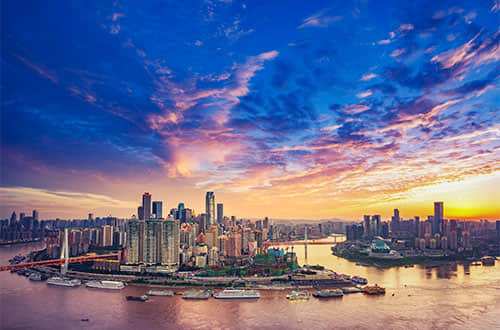
Chongqing is the largest municipality in China for both area and population. Chongqing is also the main berth for Yangtze River Cruise boats enroute to the Three Gorges Dam, which serves as a major source of hydroelectric power in the region. This city is the economic, manufacturing and transport hub in southwestern China and it is an important manufacturing and industrial base. It is also a prominent modern port city on the upper Yangtze River.
In 2017, the central government of China set up the "China (Chongqing) Pilot Free-Trade Zone". By the end of 2024, a total of 319 Fortune 500 companies had settled their branches in Chongqing. Chongqing has become one of the fastest growing cities in China, and that economic growth is not expected to slow down.
Famous attractions in Chongqing:
Dazu Rock Carvings, Hongya Cave Folk Customs Scenic Area, Jiefangbei Pedestrian Street, Chongqing Zoo,Ciqikou Ancient Town, Mountain City Footpath and Three Gorges Museum.
2. Shanghai
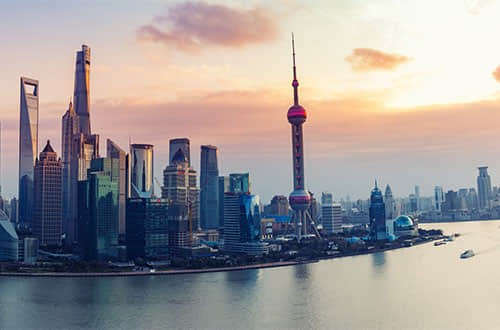
Shanghai is located in the Yangtze River Delta of eastern China. As the financial center, Shanghai plays an important role in China's economy. Shanghai port is one of the largest ports in the world. The main industries of Shanghai are financial, international trade, auto manufacturing, complete equipment, real estate and electronic manufacturing.
Because of fast-paced urbanization in the region, government policy and strong economic growth, the population of Shanghai is still growing. But the rate of population growth has declined in the last few years because of the low birth rate, aging population and migration.
Famous attractions in Shanghai:
The Bund, Yuyuan Garden, The Oriental Pearl Tower, The Former French Concession, and Shanghai Disneyland.
3. Beijing
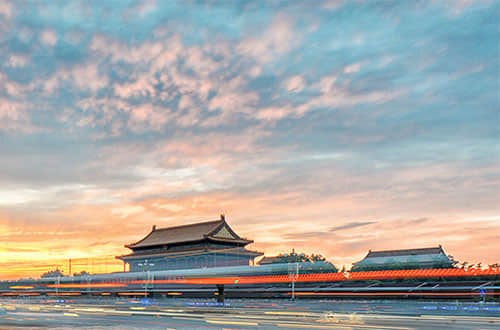
Although Beijing is the capital of China, it is not the largest city in the country. It connects the northeast and south of China. It is also close to Tianjin port, which is one of the top10 ports in the world. As the cultural, educational and administrative center of the country, we are not surprised that Beijing is one of the top-3 populated cities in China.
Beijing is a major industrial and commercial metropolis. It is also home to the top universities, research centers, and more than 60 institutions of higher learning. The history of Beijing can be traced back to over 3000 years ago. There are many well-known historical sites and world heritage sites in Beijing. So the tourist industry is a significant sector of the city's economy.
Major industries in Beijing include tourism, electronics, chemicals, automobiles, machinery, metallurgy, textiles, and garments.
Famous attractions in Beijing:
The Great Wall, the Forbidden City, Tiananmen Square, Temple of Heaven, and the Summer Palace.
4. Chengdu
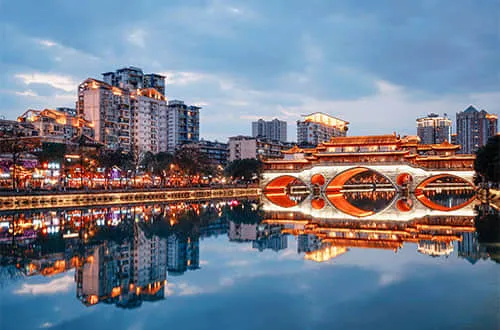
Chengdu is the provincial capital of Sichuan Province and a major city in western China. A thriving economic, transportation and communications center in southwestern China, Chengdu is also one of China's primary manufacturing, electronic, and agricultural bases. The city is part of the West Triangle Economic Zone along with Xi'an and Chongqing.
Tourism has become increasingly important for the city's economy due to the leisurely life and adorable pandas in Chengdu. The high-speed railway has connected Chengdu with other cities and the second international airport is expected to be completed in 2021. With the powerful support of China’s central government, Chengdu has a huge development potential in the future.
Famous attractions in Chengdu:
Chengdu Research Base of Giant Panda Breeding, Kuanzhai Alley, Wuhou Memorial Temple, Chengdu Renmin Park, and Jinsha Site Museum.
5. Guangzhou
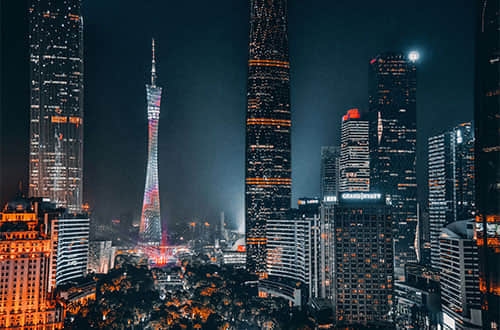
Guangzhou is the provincial capital of Guangdong and located in the Pearl River Delta. As the key port in southern China since 2000 years ago, it was one of the earliest port cities for international trade in China. This is why most oversea Chinese originated from Canton (Guangdong).
As the center of the Pearl River Delta Economic Zone and close to Hong Kong/ Macau, Guangzhou plays as important a role as Shanghai. They are the two economic development engines of China.
The major industries are automobiles, petrochemicals, retail and electronics.
Famous attractions in Guangzhou:
Baiyun Mountain, Chen Clan Ancestral Hall, Canton Tower, Shamian Island, and Pearl River Cruise.
6. Shenzhen
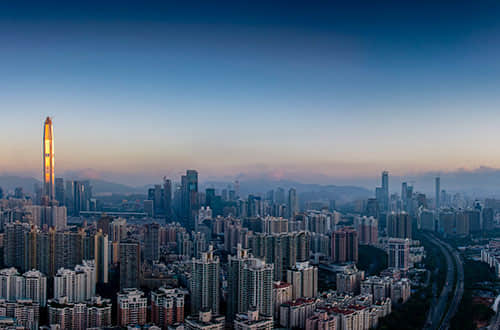
Neighboring with Hong Kong and Macau, Shenzhen is a major commercial and industrial center of the Pearl River Delta region. Until 1980, the city was a small fishing town, but was chosen as the site for China's first Special Economic Zone due to its proximity to Hong Kong.
Cultural and creative industry(CACI), high-tech industry, modern logistics, and financial services are the four major industries in Shenzhen. As a "Young" city, most of the people in Shenzhen are migrants from other parts of China. It was the first city in China to benefit from the "Reform and Opening-up Policy" initiated by Mr. Deng Xiaopingin 1979. Nowadays, Shenzhen is one of South China's most dynamic and developed economies.
Famous attractions in Shenzhen:
Shenzhen Window of the World, Happy Valley of Shenzhen, Dameisha Beach, and Huaqiang North Road Commercial District.
7. Wuhan
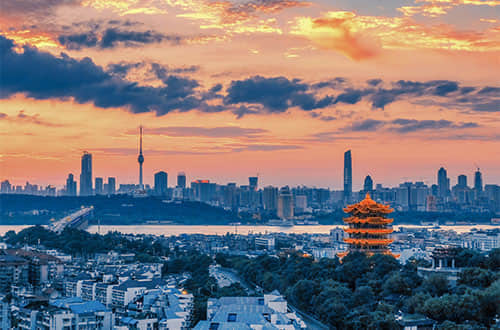
Located at the confluence of the Yangtze and Han rivers, Wuhan is renowned as the "River City". It is the capital of Hubei Province in central China.
Historically, Wuhan has been one of China's most important inland river harbors. Nowadays, it is a major national logistics hub in Central China. It has an established railway network, roads and expressways that connect the north-south and east-west traffic arteries (four trunk railway lines and six national expressways) and links the rivers with the sea. The city is now the economic, financial, trading, science, and information exchange hub of central China.
Pillar industries in Wuhan include automobile and auto parts, iron and steel, new pharmaceuticals, biology engineering, new materials industry, opto-electronics, environmental protection, renewable energy and microelectronics.
Famous attractions in Wuhan:
Hubei Museum, Yellow Crane Tower, Cherry Blossoms in Wuhan University, Hubu Alley, and Donghu Scenic Resort.
8. Tianjin
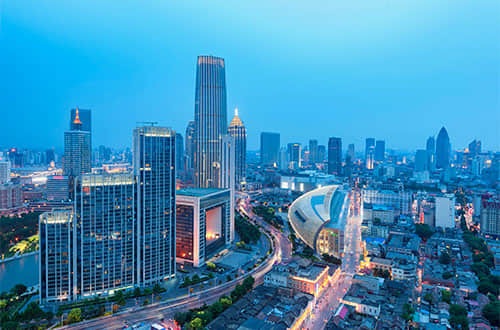
Tianjin is one of the four municipalities in China. It is also the largest port city in northern China and a hub for advanced industries and financial firms. It's only 30mins by bullet train or 2 hours’ drive from Tianjin to Beijing. The Tianjin Pilot Free Trade Zone is home to around 18,100 businesses and over 160 investment projects.
The key industries are aviation, petrochemicals, metalworking, electronics, machinery, and vehicle manufacturing.
In addition, Tianjin International Cruise Terminal is the main stopover for many international cruise ships. It's the closest place for cruise passengers to visit Beijing and the surrounding areas.
Famous attractions in Tianjin:
Porcelain House, Ferris wheel(Eye of Tianjin),Great Wall at Huangya Pass, and Tianjin Museum.
9. Xi'an
Located in Shaanxi province, approximately 1,100km (680 miles) southwest of Beijing, Xi'an is a historic city with a rich cultural legacy, though it may not share the same modern spotlight as coastal hubs like Shanghai or Shenzhen.
Xi'an boasts a history of over 3,100 years, serving as the capital for 13 dynasties, including the Zhou, Qin, Han, and Tang, making it one of China's most significant historical centers. As the eastern terminus of the Silk Road, it was a global hub for trade, culture, and religion, fostering exchanges between East and West.
Today, Xi'an is a key player in China's aerospace, technology, and education sectors, hosting numerous universities and research institutions. The city is also a center for advanced manufacturing, particularly in aviation and electronics, and is part of the Guanzhong Plain urban cluster, driving economic growth in northwest China.
With ongoing efforts to integrate into the Belt and Road Initiative, Xi'an is positioned for further development, blending its ancient heritage with modern innovation.
Famous attractions in Xi'an:
Terracotta Army, Giant Wild Goose Pagoda, Xi'an City Wall, Muslim Quarter, and Bell Tower.
10. Suzhou
Located in Jiangsu province, approximately 100km (62 miles) northwest of Shanghai, Suzhou is a vibrant city renowned for its classical gardens, canals, and rich cultural heritage, though it may not have the same global fame as nearby metropolises like Shanghai or Hangzhou.
Suzhou boasts a history spanning over 2,500 years, serving as a key center for trade, culture, and silk production during ancient times. It was a significant hub along the Grand Canal, facilitating commerce and cultural exchange. Known as the "Venice of the East," Suzhou's intricate waterways and traditional architecture have long inspired poets and artists.
Today, Suzhou is a major player in China's high-tech and manufacturing sectors, particularly in electronics, IT, and precision engineering. The city is home to the Suzhou Industrial Park, a model of Sino-Singaporean cooperation, fostering innovation and foreign investment. Additionally, Suzhou remains a leader in silk production and textile industries.
As part of the Yangtze River Delta economic zone, Suzhou is poised for continued growth, with its blend of historical charm and modern development drawing global attention.
Famous attractions in Suzhou:
Humble Administrator’s Garden, Lingering Garden, Suzhou Museum, Tiger Hill, and Shantang Street.
The rapid population growth brings some social problems, such as pollution, high house prices, resources shortage, and bad traffic, etc.
Some cities have taken steps to deal with these problems, such as clean-energy development, vehicle and car plate control, basic construction building, and migration registration policies. With these policies and the quick development of other cities/villages, younger generations now prefer to look for jobs in the 2nd/3rd tier cities or contribute to their hometown in order to look after their parents in the future. The population growth rates of those metropolises have declined in the last 10 years.
 Top 10 Most Beautiful Places in China
Top 10 Most Beautiful Places in China 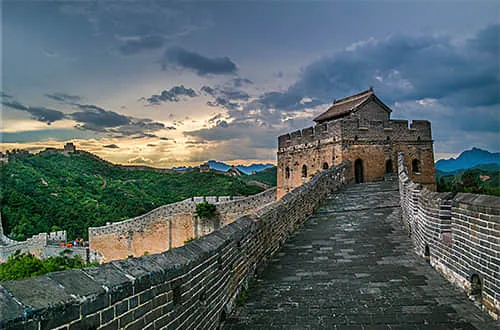 Top 10 Landmarks in China
Top 10 Landmarks in China  Top World Heritage Sites in China
Top World Heritage Sites in China 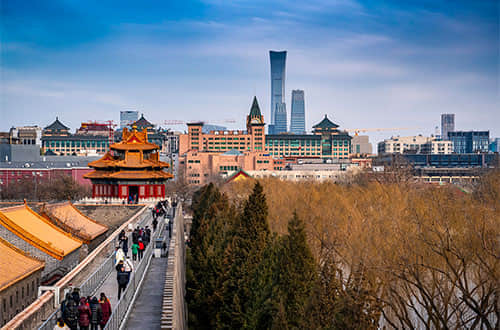 Top 12 Things Not to Do in China
Top 12 Things Not to Do in China